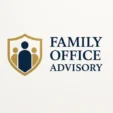Financial Education for Family Members in Family Offices #
Financial education for family members is a growing priority for family offices seeking to ensure the long-term stewardship and sustainability of family wealth. Preparing the next generation involves structured learning and experience-building initiatives encompassing investment literacy, governance, business leadership, risk management, and family legacy. These programs enhance financial confidence, support effective decision-making, and foster responsible succession.
Context & Importance #
With unprecedented wealth transfers underway, the success of succession and continuity relies on the readiness of future family leaders. The multifaceted responsibilities of managing modern wealth—coupled with global mobility and increasing complexity—demand a strategic approach to education. Proactive family offices deliver formal training, peer exchange, and immersive programs to mitigate risks of family member disengagement, financial mismanagement, or breakdowns in family cohesion.
Key Types or Components #
- Investment and Wealth Literacy: Teaching fundamental investing principles, asset allocation, portfolio management, and global market dynamics.
- Business and Leadership Training: Courses and mentoring programs on governance, entrepreneurship, and strategy for those involved in family enterprises.
- Governance and Communication Skills: Instruction in family constitutions, dispute resolution, boardroom dynamics, and decision-making protocols.
- Risk and Compliance Education: Providing awareness and management strategies for legal, tax, regulatory, and reputational risks.
- Peer Networking and Experiential Learning: Peer forums, leadership camps, and international exchange opportunities to build confidence and broaden perspectives.
Purpose or Relevance #
Structured financial education supports family offices in cultivating future generations equipped to protect family wealth, navigate complexity, and uphold collective values. Tailored programs encourage responsible stewardship, align individual and family objectives, and enable a smoother wealth transition. Engaging education reduces generational gaps, establishes trust, and inspires innovation in both business and philanthropic domains.
Implementation & Best Practices #
- Personalized Learning Journeys: Assess each family member’s needs, interests, and prior experience to tailor education plans.
- Peer Engagement: Facilitate cross-family networking, leadership forums, and exchange programs to promote peer-driven learning.
- Experiential Learning: Provide real-world exposure to governance, investment committees, or philanthropic activities.
- Ongoing Mentorship: Pair next-generation members with trusted advisers or senior family leaders for sustained guidance.
- Global Perspective: Incorporate international best practices and exposure to diverse markets to broaden outlooks.
- Family Communication: Encourage transparent dialogue, regular meetings, and shared experience discussions to reinforce engagement and alignment.
Common Challenges #
- Diverse Learning Needs: Adapting content to different ages, interests, and cultural backgrounds.
- Engagement and Motivation: Overcoming inertia, lack of interest, or resistance among younger family members.
- Generational Gaps: Bridging values and communication differences between generations.
- Confidentiality Concerns: Balancing open education with privacy and data security for sensitive information.
- Resource Limitations: Allocating adequate time, expertise, and funding for sustained, high-quality education programs.




